Art History II - Exam 2
1/27
There's no tags or description
Looks like no tags are added yet.
Name | Mastery | Learn | Test | Matching | Spaced |
|---|
No study sessions yet.
28 Terms
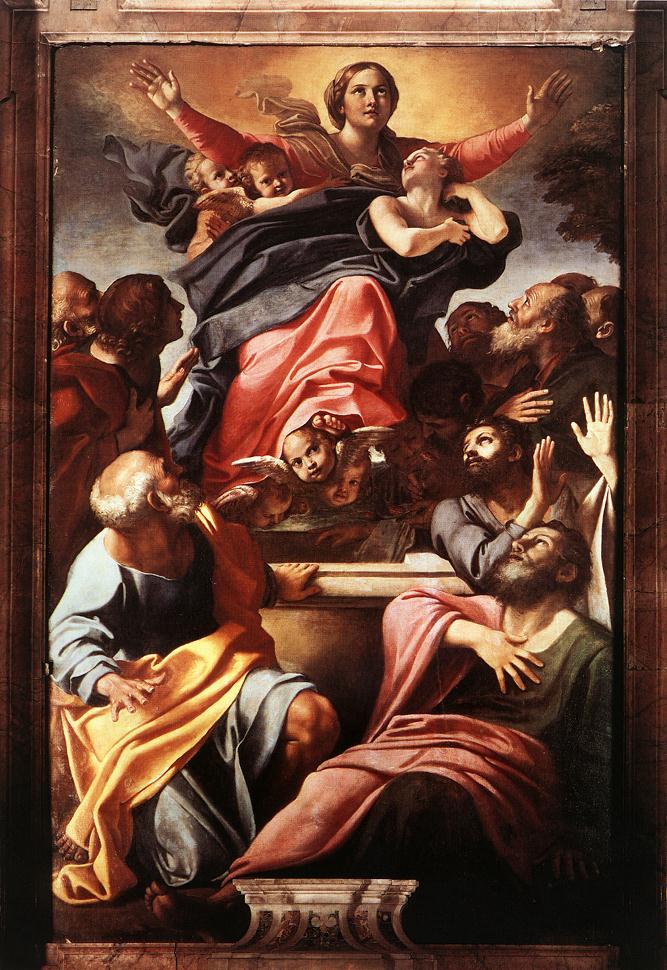
Annibale Carracci, Assumption of the Virgin, 1600, oil on panel
representative of the 2 competing styles of art, the High Renaissance vs the emerging Baroque
Drawing on stylistic choices of the Renaissance, such as idealization but leaning into the dynamism of the Baroque

Caravaggio, Crucifixion of Peter, 1600, oil on canvas
origins in Northern Italy (emphasis on naturalism) influenced his style
dynamic: showing it in the climatic moment
clothing contemporary to 17th century (personal relevance reflects political push for religious art to be concise and easily understood by viewers), simple iconography: rock, anonymity of figures surrounding Peter includes the viewers in the painting by opening up self-identification possibilities (beholder share, another aspect of Baroque)
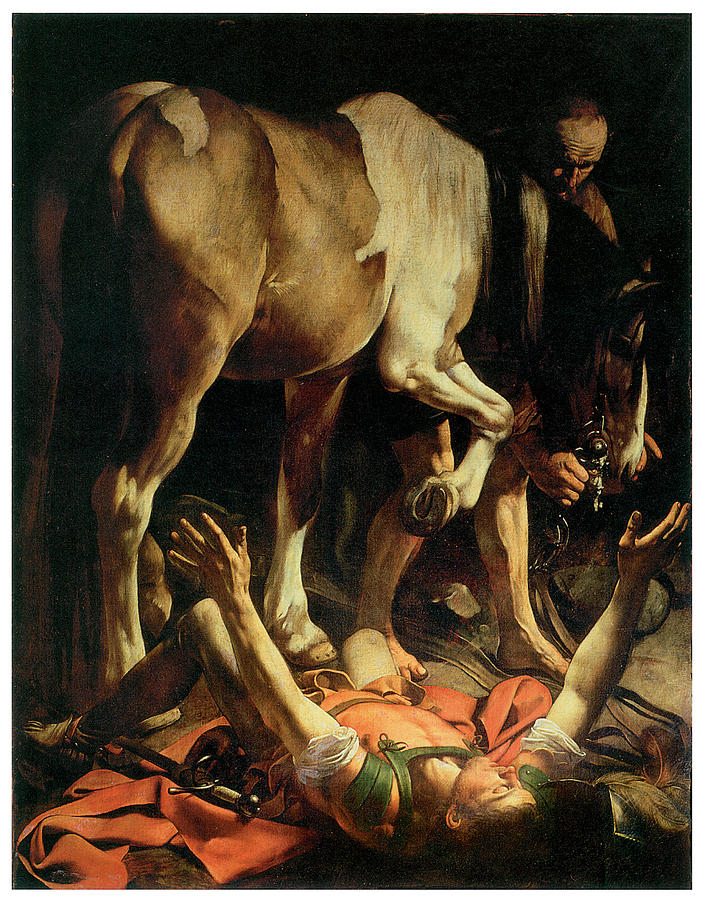
Caravaggio, Conversion of Saul, 1600, oil on canvas
Saul intervened by divine light which corresponds with the ceiling lighting of where it was placed (in situ)
this was the 2nd version painted because the 1st was too busy (Church art doctrine, following the Counter-Reformation, focused on conciseness & comprehensibility)

Artemesia Gentileschi, Judith Beheading Holofernes, 1620, oil on canvas
In comparison with Caravaggio’s subtle rendition, Gentileschi successfully conveyed Judith’s agency and capability as she murders Holofernes. The movement and unfiltered graphicness make the story believable. Unfortunately, most of her work, including this painting, has been interpreted as synthezisations of her trauma, and therefore undermining her talent.
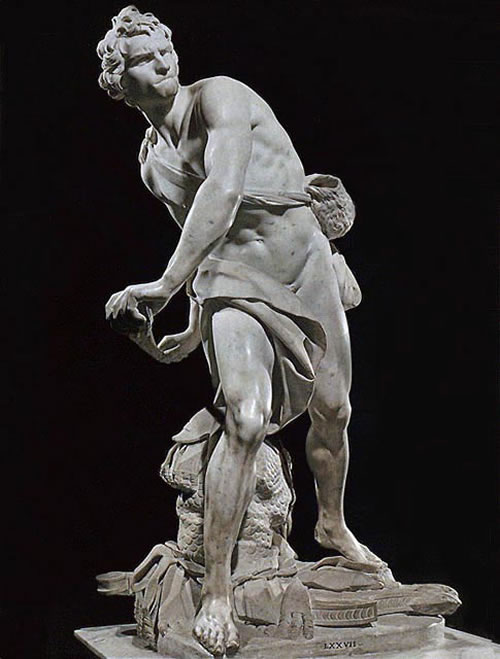
Gian Lorenzo Bernini, David, 1625, marble
new example of David, not before or after, but during
a part of the interactive quality of Baroque art, David is in action—the viewers need to complete the narrative themselves
including the audience (beholder share)
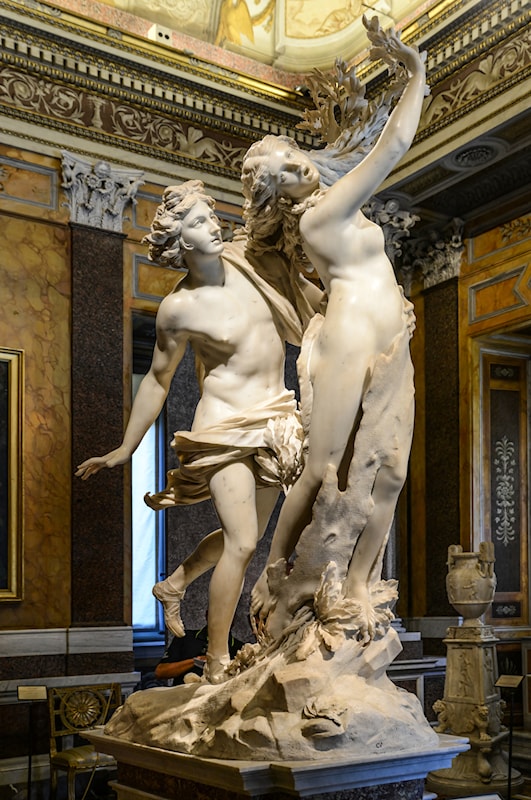
Gian Lorenzo Bernini, Apollo and Daphne, 1625, marble
a story of unrequited love from Ovid’s Metamorphoses, Bernini showcases Baroque dynamism, not only in movement of the figures, but also in the literal transformation of Daphne as she turns into a tree
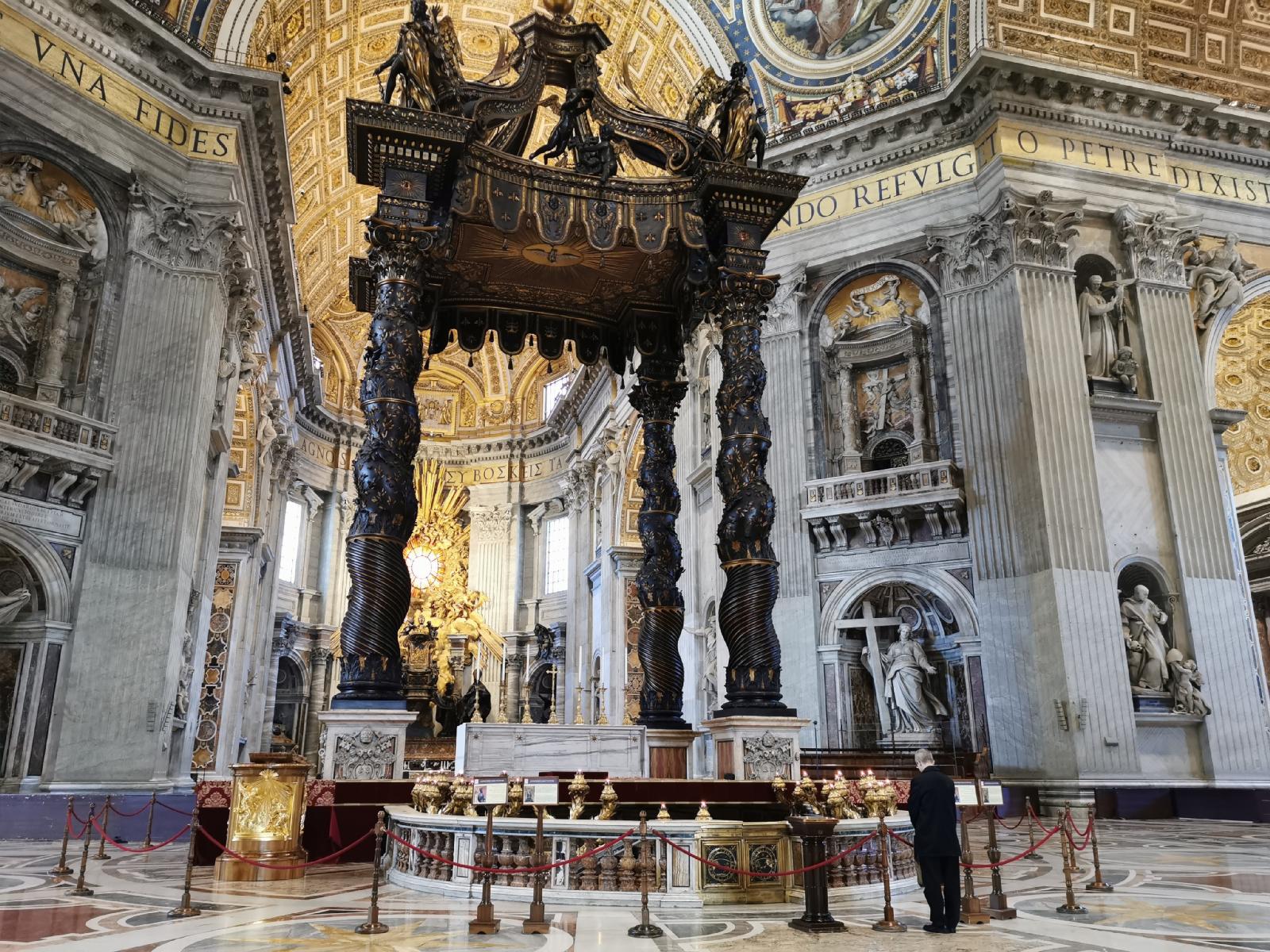
Gian Lorenzo Bernini, Baldacchino, 1625, gilt, bronze, & wood
Name and structure derived from a combination of baldachin (traveling tent to identify royals) and ciborium (super structure above alter to emphasize importance)
bronze is stolen from ancient Roman art/architecture
columns represent Solomonic columns brought from the temple of Jerusalem from when it was destroyed
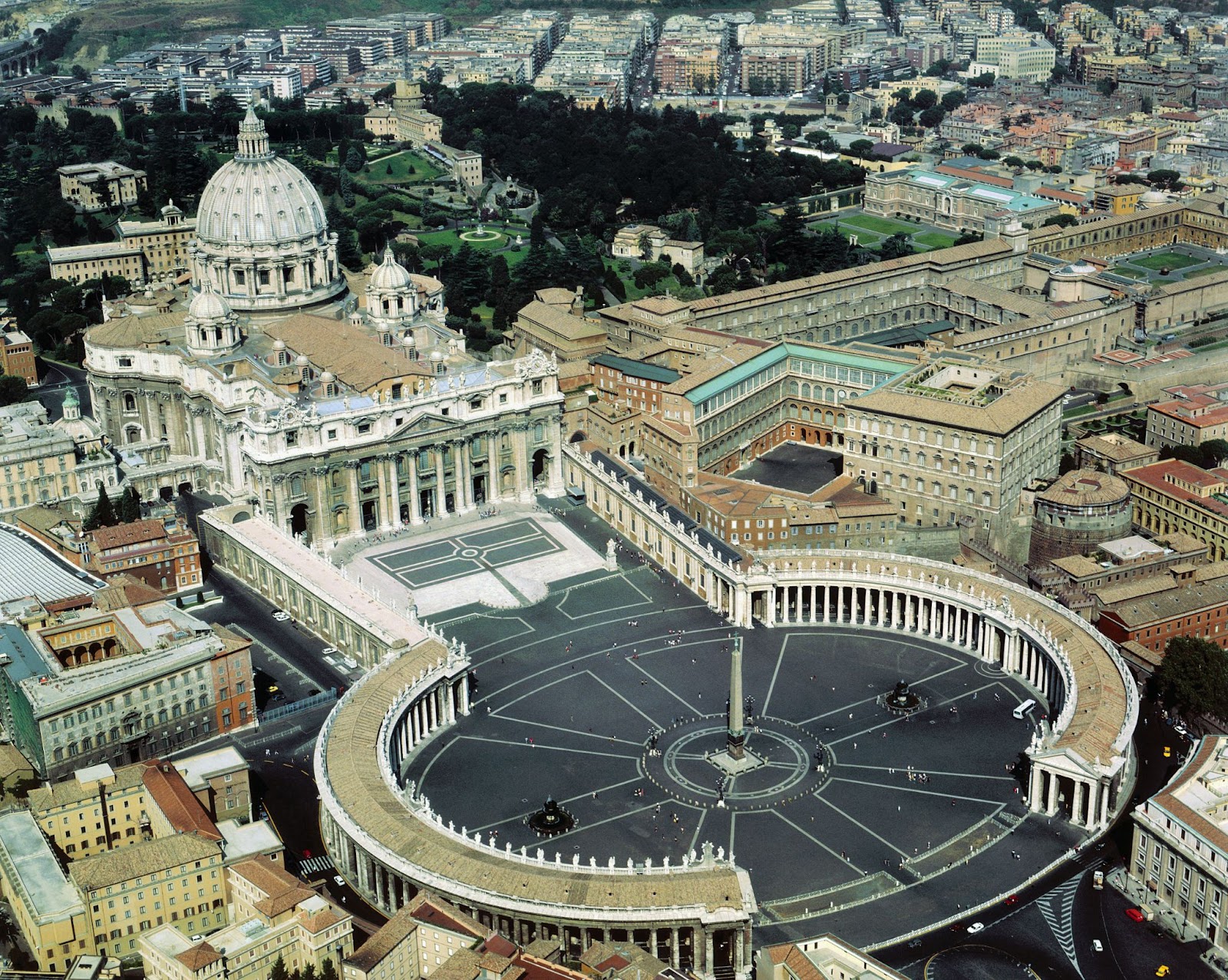
Gian Lorenzo Bernini, St. Peter’s Piazza, 1655
Commissioned by Pope Urban VIII in his efforts to beautify Rome and subsequently make the Vatican the center of the Catholic world
Took inspiration from arena and theater architecture to be an extension of the basilica, the surrounding structure of the piazza is meant to embrace visitors, described as the “motherly arms of the Church”
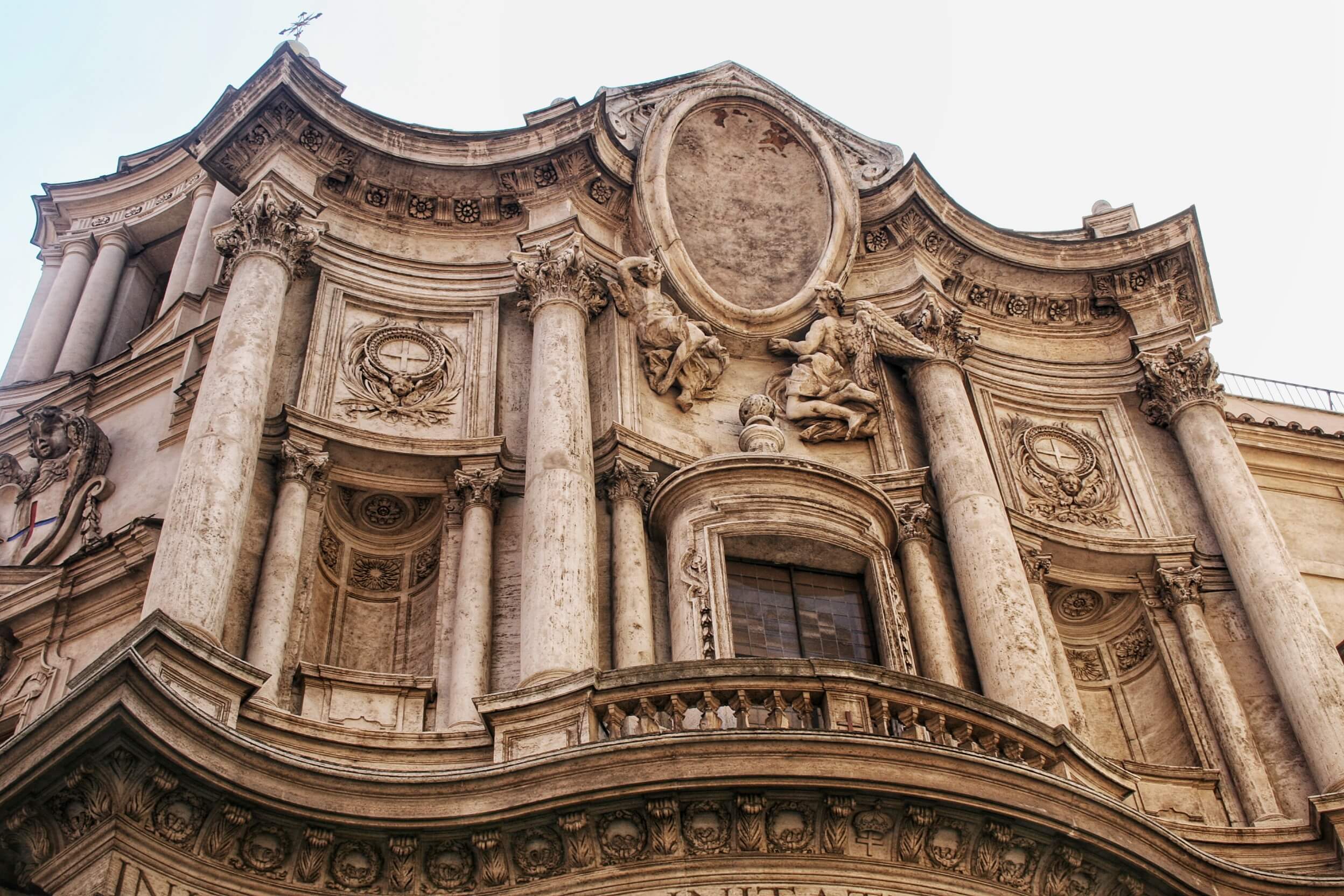
Francesco Borromini, San Carlo alle Quattro Fontane, 1640
like the interior of the church of San Lorenzo, where the geometric space meant to reflect mathematical language, the universal language of the divine, Borromini uses geometric designs to pass from the terrestrial to the celestial (as eyes travel up the dome, where light comes in, the design becomes more intricate and conveys a sense of supernatural presence)
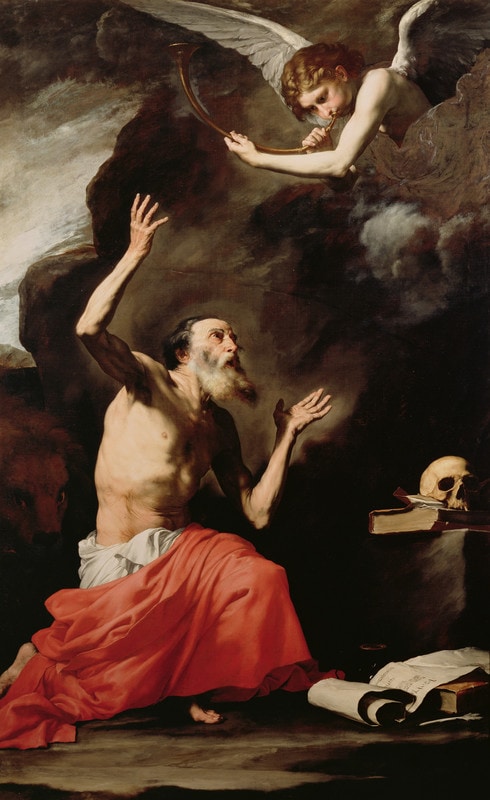
Jusepe de Ribera, St Jerome and the Angel of Judgement, 1625, oil on canvas
A direct compositional reference to Caravaggio’s painting of St. Matthew, this piece uses tenebrism (although not as extreme as others) and showcases the height of naturalism—the aged body of St Jerome (dehydrated and loose skin).

Diego Velázquez, Las Meninas, 1655, oil on canvas
Reminiscent of Jan van Eyck’s portrait of the Arnolfini couple (which belonged to the Spanish royal collection at the time), in the sense that a hidden story is reflected in the mirror in the background, as well as the intricate details. There is symbolism in the mirror reflection of the royal monarchy and representation of Spain’s colonization of Mexico in the red drapery and pottery (maybe a commentary on their fading imperial power). Velázquez also speaks to the definition of a painter as he inserts himself in the painting, his hand morphing into the brush with the use of loose strokes of paint.

Georges de la Tour, Magdalen with Smoking Flame, 1640, oil on canvas
The narrative of Mary’s life is told in the material trappings that she has cast aside after following Jesus. She looks past the mirror, a symbol of vanity, reflecting her transcendent moral conscience. The interior lighting communicates that this moment is self-contained and quietly meditative. The use of tenebrism to emphasize and contrast the single flame against the dark background, isolates the focus on Mary and her moral contemplation.
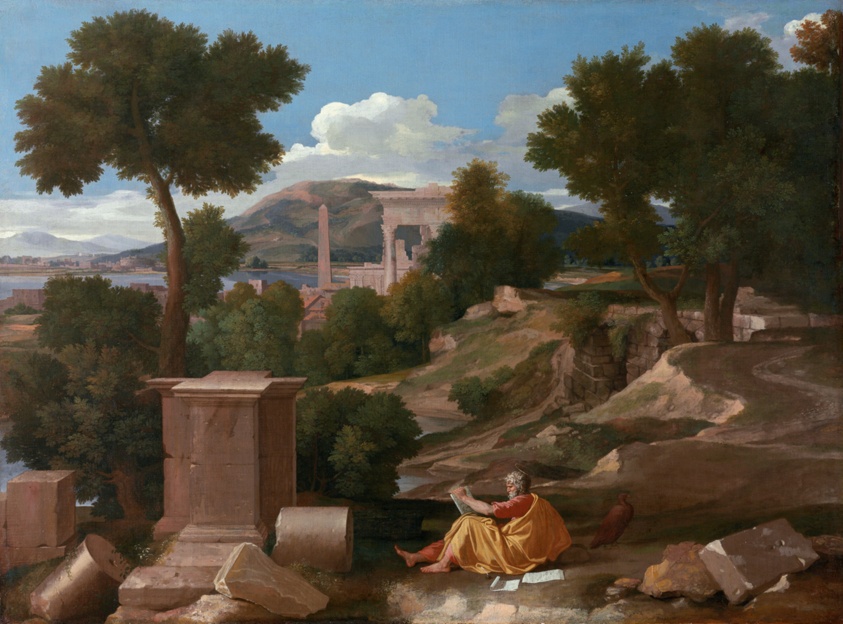
Nicolas Poussin, Landscape with St. John of Patmos, 1640, oil on canvas
Poussin was a court painter, a new status for artists that secured a salary. Poussin reflects the story of St. John as he writes of the end of the world by referencing the ancient worlds which have fallen and crumbled in the foreground and background. A message of the temporal state of any civilization.

Rembrandt, The Anatomy Lesson of Dr. Tulp, 1630, oil on canvas
Rembrandt presents viewers with a more dynamic version of portraiture compared to past examples. This scene is active, each figure having their own individual experiences conveyed, as well as the dissemination of knowledge portrayed through three main stages: literature (anatomy book)→ practice (cadaver dissection) → encoding (students’ learning). We also see Dr. Tulp’s personal literature referenced in the examination of the hand, in which he identified the dexterity of the human hand as the factor that sets us apart in the animal kingdom.
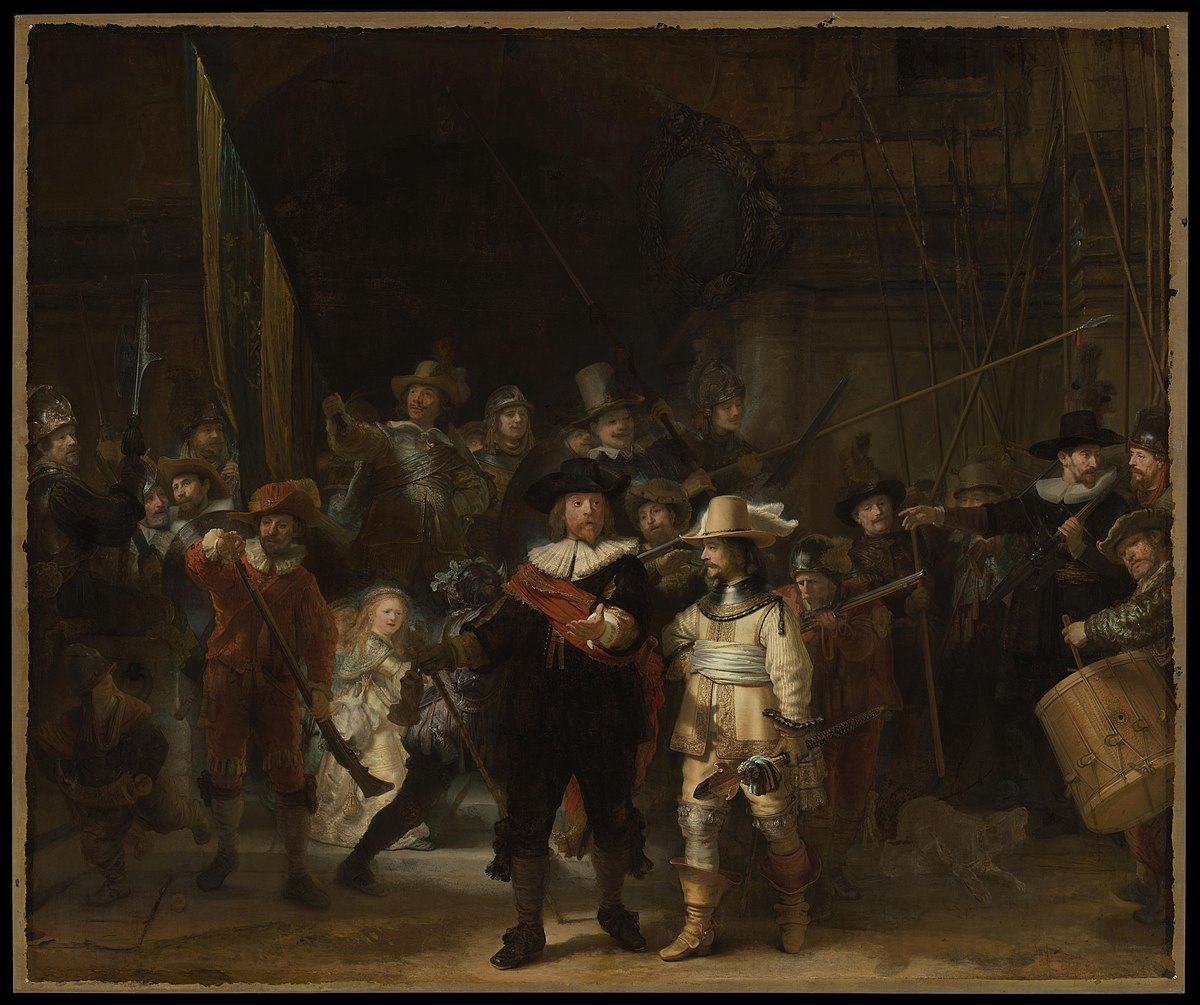
Rembrandt, Captain Frans Banning Cocq Mastering His Company (The Night Watch), 1640, oil on canvas
The giant composition was a symbol of civic pride and is another example of Rembrandt’s breaking of portraiture tradition. There is not the expected equal distribution of prominence, instead, Rembrandt has captured the movement of the crowd and militia as they would appear, in action.
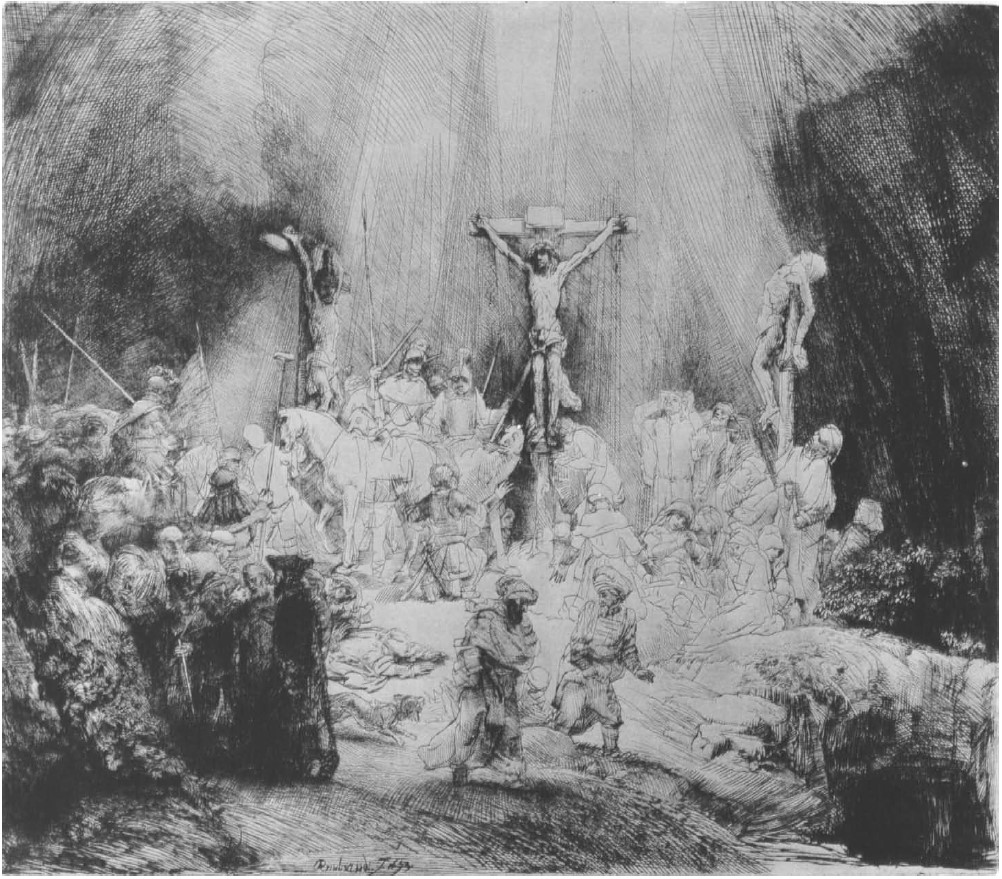
Rembrandt, Three Crosses (First State), 1655, drypoint
The states are different versions of the same print; each state represents changes made to the copper plate because the burr had worn down and the plate needed to be touched up. Rembrandt was a pioneer in drypoint that allowed for the velvety, dark lines seen here. In this composition he combined explicit religious narratives with the various moments of human emotion—he altered these emotional themes each time, creating a new effect.

Rembrandt, Three Crosses (Fourth State), 1655, drypoint
The states are different versions of the same print; each state represents changes made to the copper plate because the burr had worn down and the plate needed to be touched up. Rembrandt was a pioneer in drypoint that allowed for the velvety, dark lines seen here. In this composition he combined explicit religious narratives with the various moments of human emotion—he altered these emotional themes each time, creating a new effect.
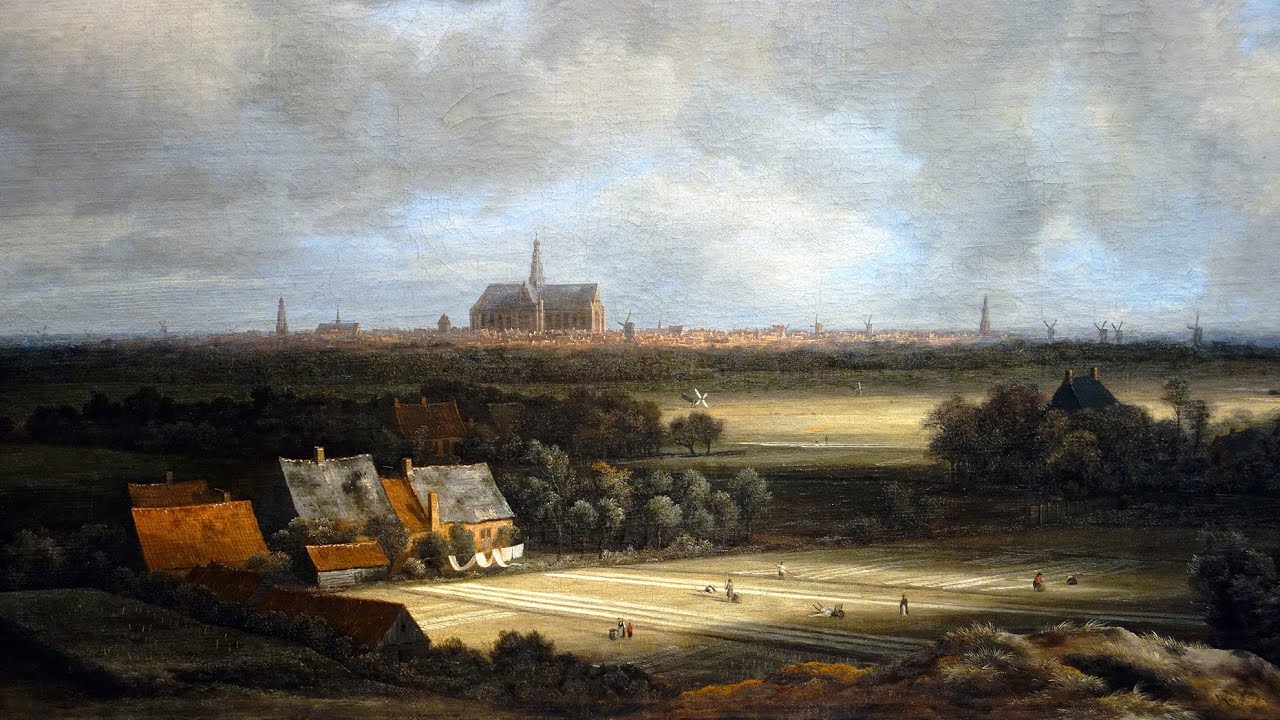
Jacob van Ruisdael, View of Haarlem from the Dunes at Overveen, 1670, oil on canvas
A mastery of landscape painting as the cloud patterns and subsequent illumination matches with the patches of light on the ground. Many sholars have interpreted this painting as religious, specifically Protestant, due to the patterned illumination. A giant patch of sunlight is found far from the church in the background where the workers lay out their textiles, which seems to speak to the fact that one’s relationship with God (symbolized through the light) can be found anywhere—this aligns with Protestant beliefs that God’s relationship can be individualistic.
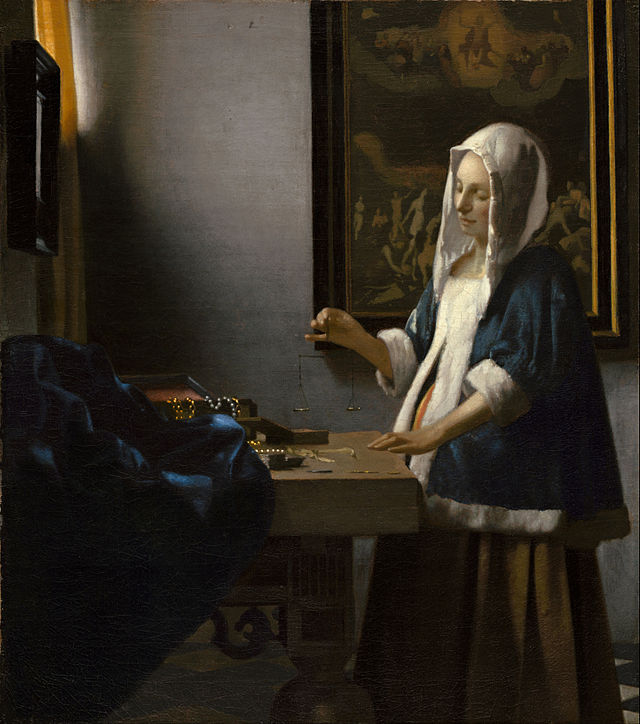
Johannes Vermeer, Woman Holding a Balance, 1665, oil on canvas
Vermeer was a deeply Catholic artist in a predominately Protestant area, he reflects his faith in the Last Judgement painting in the background which is paralleled by a woman’s balancing of material goods, an irrelevant practice in the face of God’s judgement. The out-of-focus and fuzzy quality of this painting can be attributed to Vermeer’s use of the camera obscura, a new technology at the time that reflected an image directly on a plate or canvas for tracing/painting. His technologically integrated process is especially clear in the specks of highlights he uses.

Hyacinthe Rigaud, Portrait of Louis XIV, 1700, oil on canvas
An opulent display of wealth and power in the king’s pose and ceremonial dress. This specific depiction is essentially a piece of political propaganda as Louis XIV wants to represent his rule as divinely appointed and absolute, an unmistakable power.
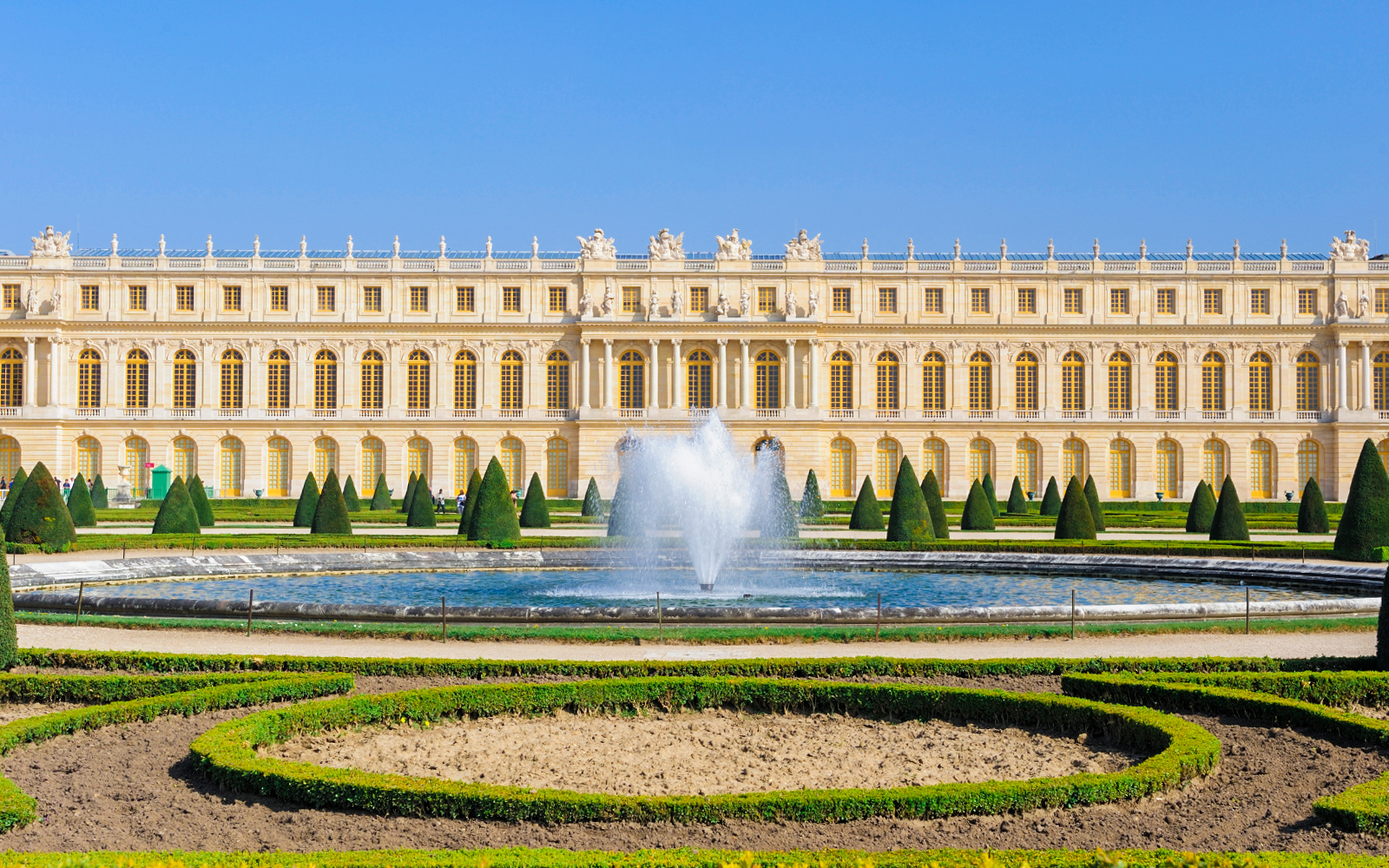
Louis Le Vaux, Jules Hardouin Mansart, and Andre Le Notre, Versailles Palace, 1685
Louis XIV's reign comes right as the Baroque period begins to end and tastes begin to lean towards that of the aristocracy (Rococo). A celebration of unspeakable wealth and power is reflected in the use of Greco-Roman architectural vocabulary and the iconography of light (Hall of Mirrors) for the sun king.
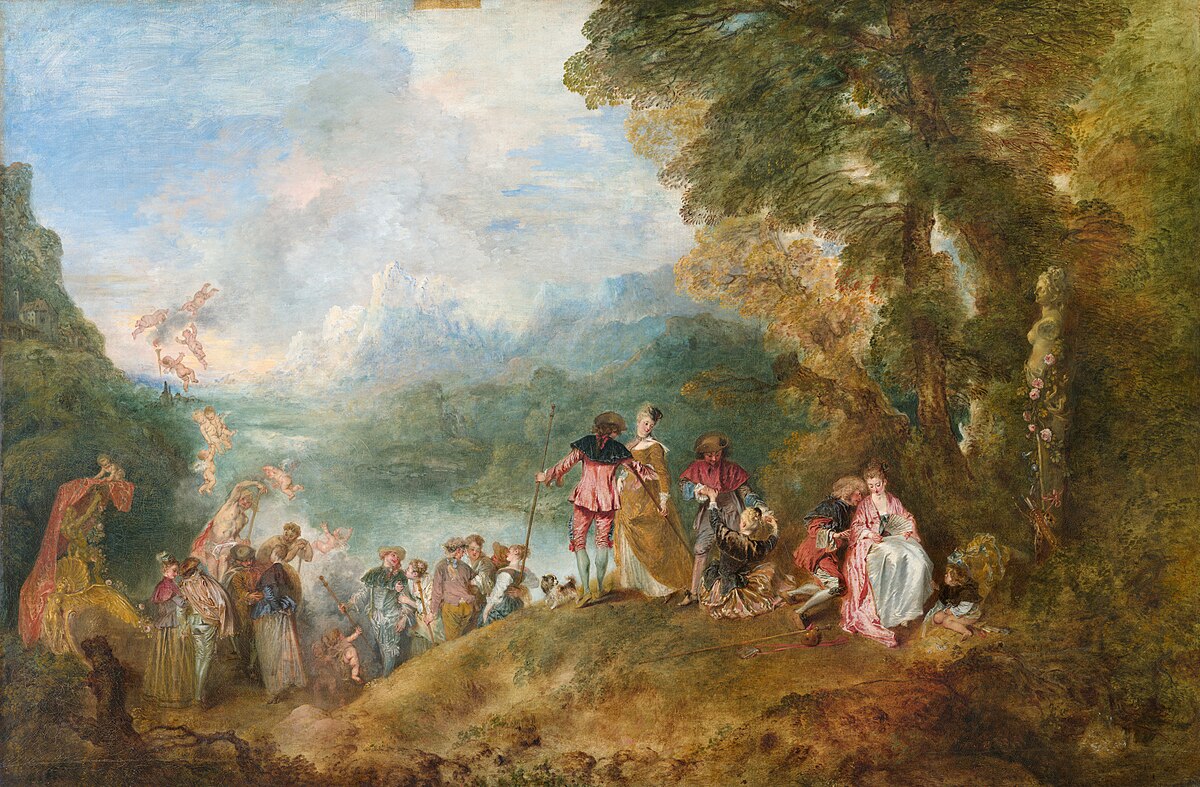
Antoine Watteau, Pilgrimage to Cythera, 1715, oil on canvas
This painting is a fête galante (courtship party)—a genre invented by Watteau. It displays the richness of the aristocracy and is one of the first paintings to define the Rococo movement which moved away from Baroque seriousness and focused on playfulness, evident in the soft brushstrokes and light pastel shades.
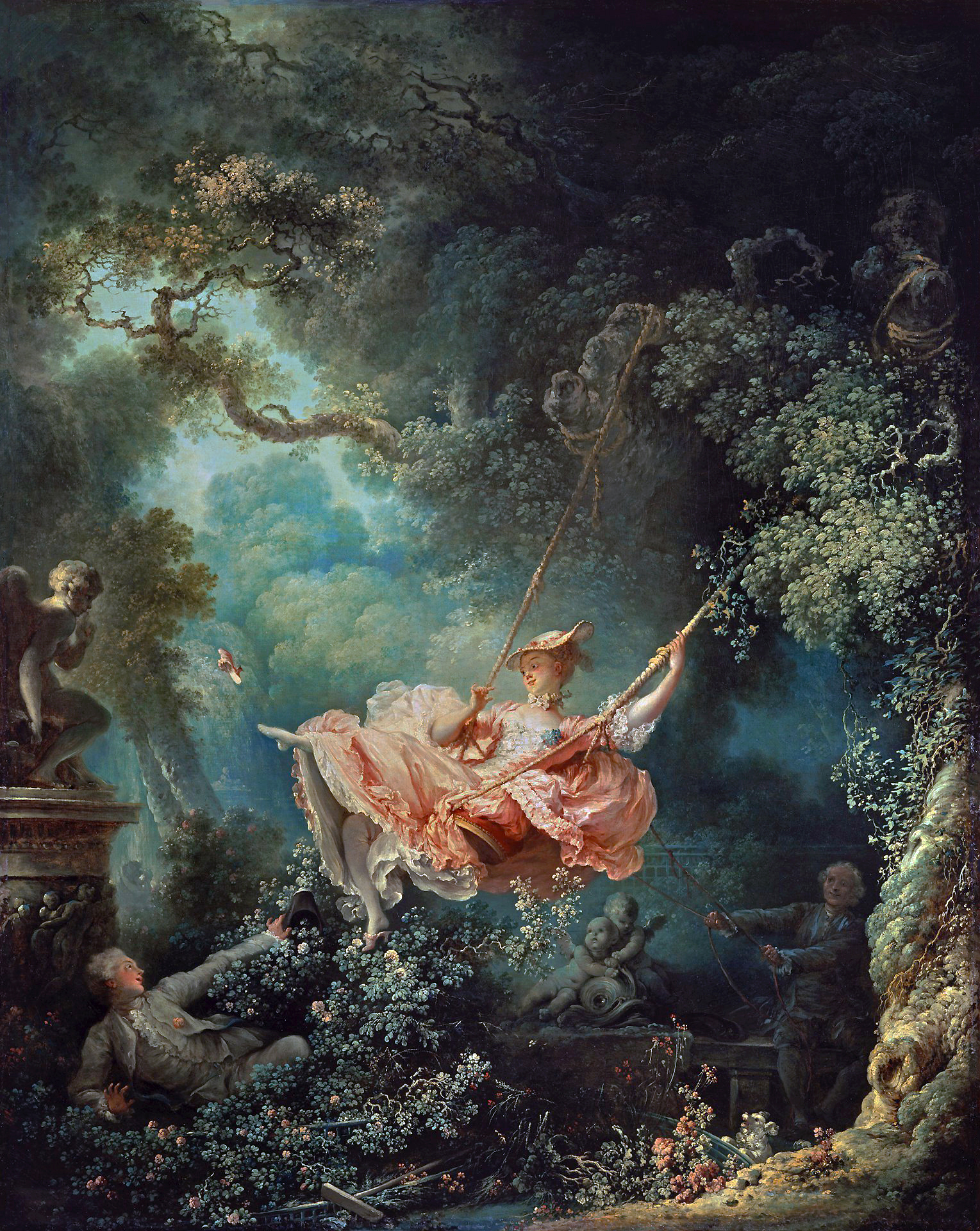
Jean-Honoré Fragonard, The Swing, 1765, oil on canvas
Hidden beneath the delicateness of the Rococo style is a story of adultery, unbeknownst to the husband (who is literally in the dark) who pushes the young woman on the swing. With a conspiring statue of Cupid, Fragonard seems to comment on the moral deficiency of the aristocracy, who often lived without consequences, courtesy of their immense wealth.
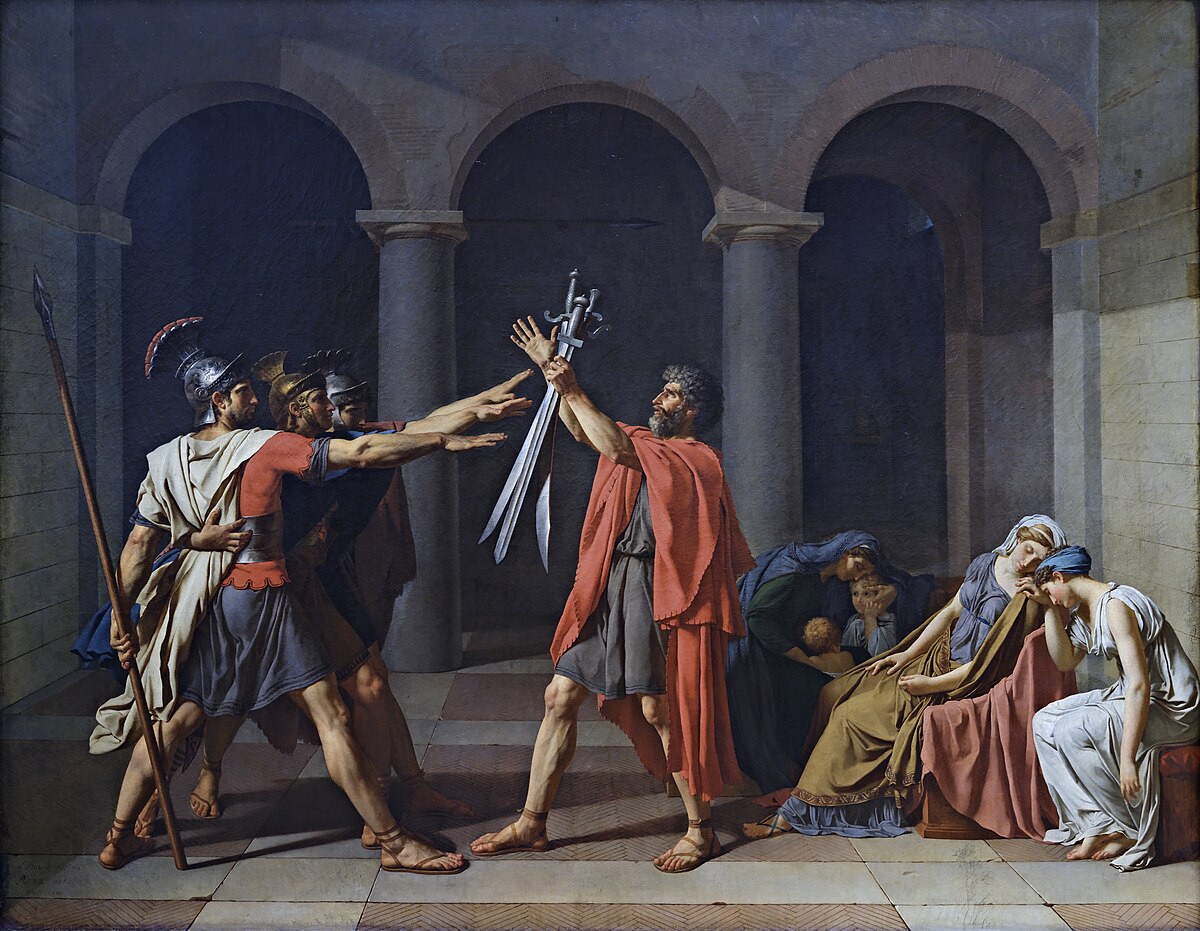
Jacques-Louis David, Oath of Horatii, 1785, oil on canvas
This painting is a part of the Neoclassicist movement that was in a lot of ways reactionary to the Rococo era and emphasized a return to classical examples and rationality. These ideals are represented in the clear and precise brush strokes that make these idealized figures incredibly neat. Classicism is found in the accurate depictions of Greco-Roman architecture background.
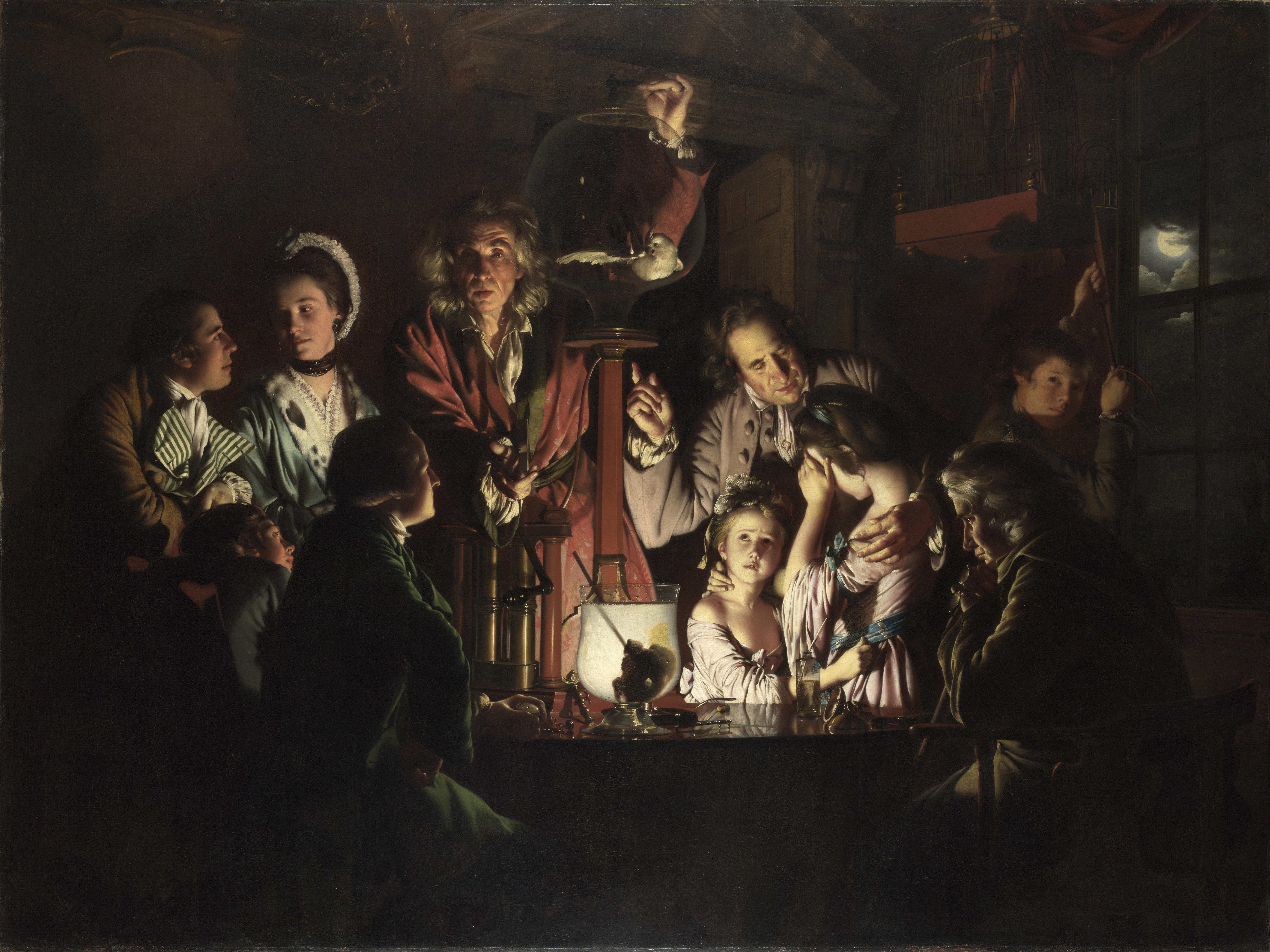
Joseph Wright Darby, An Experiment on a Bird in the Air-Pump, 1765, oil on canvas
Reminiscent of Caravaggio’s level of tenebrism. Darby uses the central light as a way to dispel irrationality or superstition associated with the night setting, by physically lighting the dark space, the Enlightenment movement is being communicated. The different figures all represent differing perspectives on the scientific process:
fear of science or feelings of uncertainty
contemplation of implications
capitalization of invention
genuine curiosity
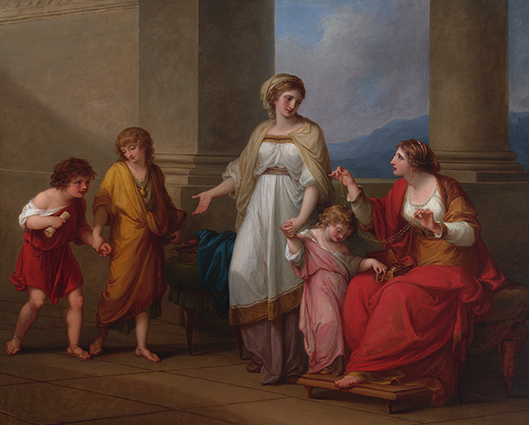
Angelica Kauffmann, Cornelia and Her Children, 1785, oil on canvas
The use of ancient subjects raises this painting to the level of history painting, the most respected style in the hierarchies of genres. An emphasis on the family unit and motherly devotion is represented, similar to Marie Antoinette’s family portrait. The painter is a woman which speaks to the subject matter, domestic scenes were most likely afforded to the few women painters because of subject accessibility (unable to draw nudes or attend academies)
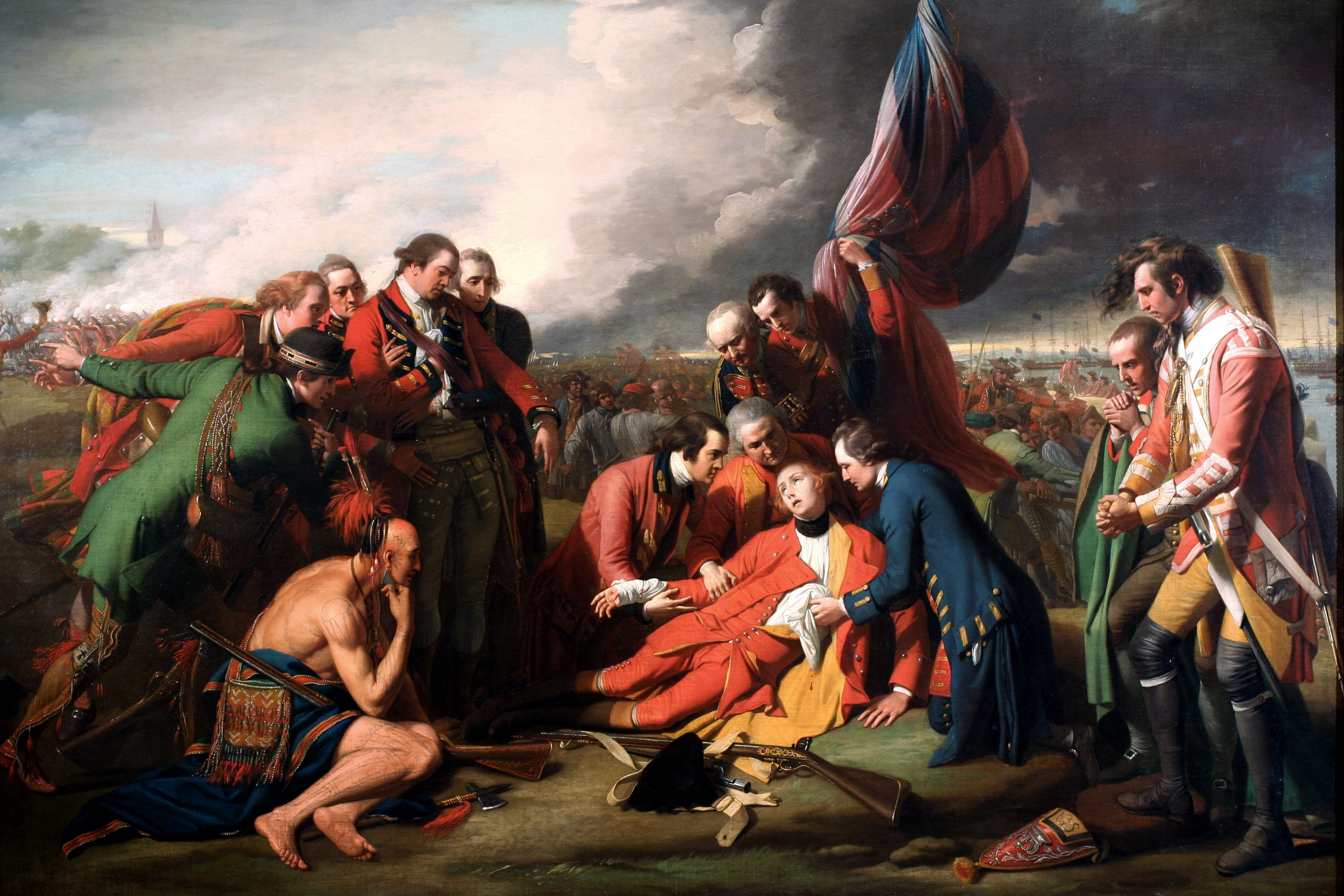
Benjamin West, Death of General Wolfe, 1770, oil on canvas
This history painting is especially interesting because of its timeframe, only painted about 10 years after the event (a history painting on the level of a contemporary example). Comparisons can be drawn to Rogier van der Weyden’s composition of The Deposition—West takes arguably the most popular image of death and turns it secular, conflating religious iconography with political iconography. The European fetishization of the “noble savage” is represented in the contemplative indigenous soldier.
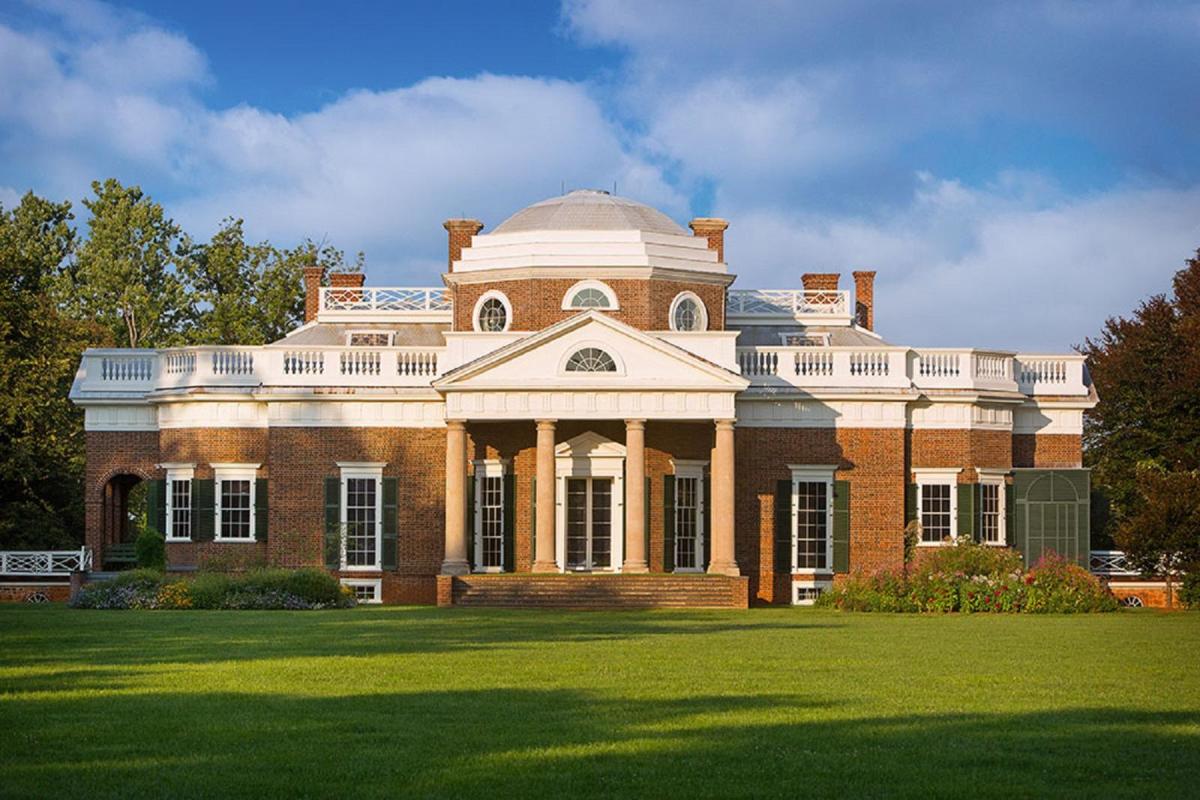
Thomas Jefferson, Monticello, 1770
By building in the vocabulary of ancient empires, like ancient Greece and Rome, Jefferson seems to evoke and emulate notions of great power and imperial rule, especially during a time when America was looking for its identity as a nation. The influence of Neoclassicism is from Jefferson’s travels as the French ambassador. An intersection of native materials with foreign artistry creates a metaphorical blend of American structure and Greco-Roman ideals.